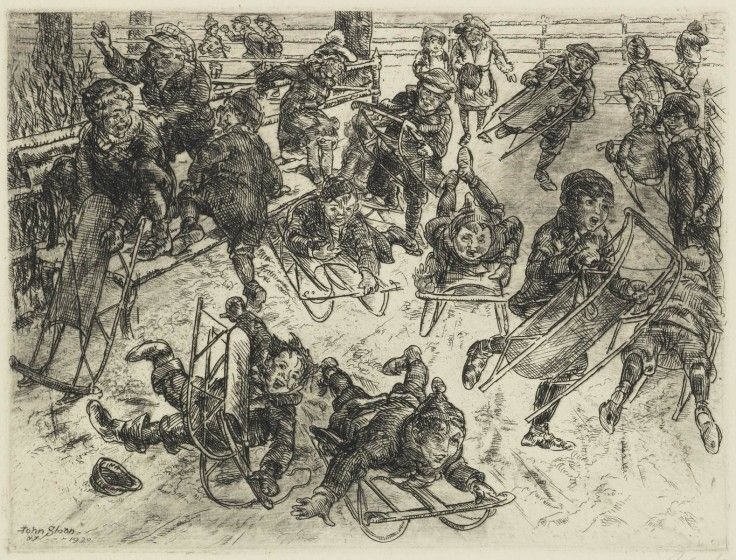In the early twentieth century, John Sloan emerged as a key figure of the Ashcan School, a group of artists focused on portraying the unvarnished realities of modern life in New York City.
A painter and printmaker, Sloan worked in oil and etching to depict the urban environment around him, adopting both the loose brushwork of his fellow modernists in his paintings and a more intricate style to capture intimate studies of everyday life in his prints. Selected from a collection of over 500 prints donated to the Brandywine Museum of Art by the late Paul Preston Davis, the more than 50 works in John Sloan’s Street Theater survey the American artist’s output in this medium.
An inveterate people-watcher, Sloan recorded activities across the social spectrum, often making pointed class comparisons while providing a window into a time of technological, political, and cultural change: horse-drawn carriages gave way to automobiles, Prohibition came and went, and women’s roles evolved, with the emergence of the flapper and a class of young, independent professionals. Sloan also depicted the excitement of children growing up in the city, seemingly surrounded by endless adventures. Through a variety of street scenes, these remarkable prints invite visitors to experience urban life in early twentieth-century New York City through the artist’s eyes.



